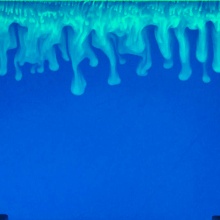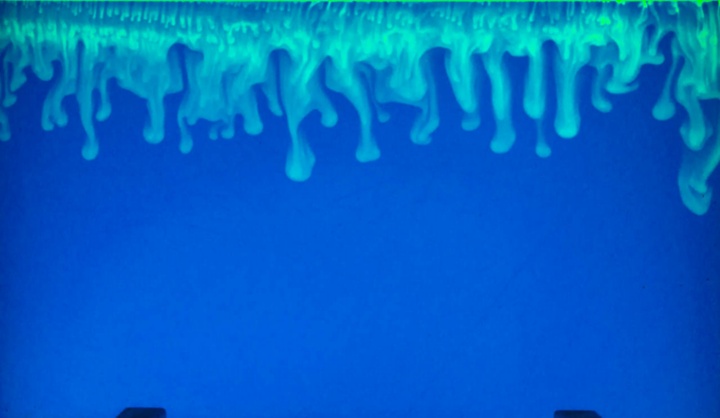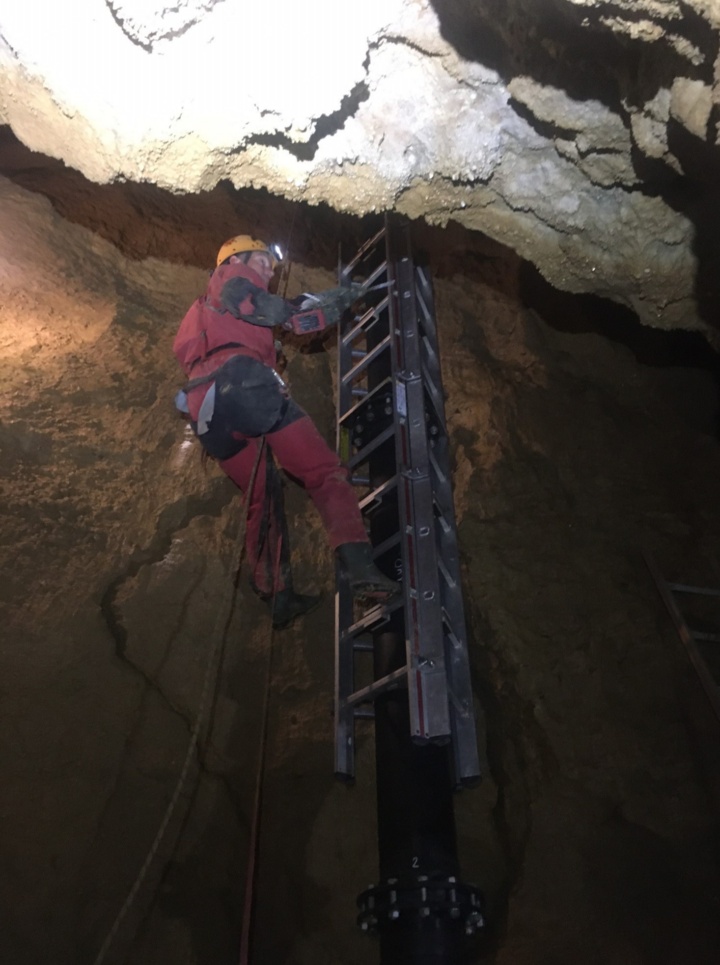About the background of the article
The article "Nerochytische Speläogenese – Versenkung von CO2 aus der vadosen Zone in das Karstwasser der phreatischen Zone: Stand der Forschung 2020" (translation: "Nerochytic speleogenesis – injection of CO2 from the vadose zone1 into the karst2 water of the phreatic zone3: State of research 2020") was published in the Laichinger Höhlenfreund, issue N° 55. The Laichinger Höhlenfreund is a magazine, reaching the German-speaking cave community, spanning from hobby speleologists to researchers in academia.
The basis of the publication is the Bachelor’s thesis "Experimentelle Visualisierung von Konvektion durch in Wasser gelöstes CO2" by Pascal Bürkle, which was supervised by SFB 1313 principal investigator Holger Class from the Department of Hydromechanics and Modelling of Hydrosystems (LH2) of the Institute for Modelling Hydraulic and Environmental Systems (IWS) of the University of Stuttgart. This topic will be related to the “vision topic” formulated in the proposal for the second funding period of SFB 1313. The processes at the interfaces between atmosphere and vadose zone as well as between the vadose zone and the saturated zone are related to similar processes in the field of evaporation from soils and salt precipitation.
The hypothesis
Research on the formation of caves does not only serve to improving the understanding of speleologenesis4. Knowledge on CO2-related processes may also have the potential to be used for possible climate protection or geoengineering in the future5. Since this is strongly related to the subsurface, it affects one of the core fields of porous-media research.
The article discusses the investigation of a potentially missing process in the current karstification theory6 – the authors refer to this as “nerochytic speleogenesis” (NERO; nerochytic from the Greek word for “sink”). According to this hypothesis, the carbon dioxide (CO2), necessary for the development of caves, is not only passively flowing through the subsurface with its existing subsurface water. They assume that, additionally, the CO2 in the air develops an individual mobility and dissolution dynamics, directed (“sinking”) into the depth of the subsurface water bodies, under the right circumstances. They want to investigate how important this particular NERO process is and whether or not it can contribute to improving the karstification theories. Similar processes are well-known from research on geologic sequestration of CO2.
CO2 is the main aqueous component concerning cave and karst formation. Without CO2, no karst formation is possible. The process is the following: CO2 dissolves in water. The water becomes acidic. In this condition, carbonates (limestone) is dissolved from rocks. A constant replenishment of CO2 is necessary to keep this process going, but where does the CO2 come from? According to the current theory, rainwater is responsible for the transport of CO2, produced by microorganisms in the subsurface, into the deeper natural underground. There, the CO2 dissolves limestone. The authors of the article assume that the above mentioned NERO process, an additional CO2 dissolution process, needs to be considered. CO2 in the air is transported towards the karstic water table, e.g., by barometric changes or cave ventilation. According to their theory, the CO2 sinks into the karstic water table and dissolves there on its own under the right circumstances (see picture below).
Pascal Bürkle investigated this particular physical process in his Bachelor’s thesis, focussing on experiments, investigating the dynamics of the dissolving CO2. How fast is this process? Which driving force is necessary for it? With the help of the experimental data, the authors could compare the results with a numerical model and they could show that their model is able to capture the relevant processes. This newly formulated approach is primarily intended to stimulate research, to question previous knowledge and understanding and, if necessary, to reinterpret them.
Future Work
Holger Class, Pascal Bürkle, Harald Scherzer (Höhlen- und Heimatverein Laichingen), Oliver Trötschler (VEGAS, Uni Stuttgart), and colleagues from Geoforschungszentrum Potsdam (Martin Zimmer, Bettina Strauch) will further conduct experiments in this particular research field. In April/May 2021, they plan to set up a 6 metres tall column in the “Laichinger Tiefenhöhle” for a period of two to three years, to measure the CO2 seasonal cycles both in the cave’s air and in the water body on a bigger time scale.
---------------
1 Karst: karst is a topography formed from the dissolution of soluble rocks such as limestone, dolomite, and gypsum. It is characterised by underground drainage systems with sinkholes and caves.
2 Speleology: the scientific study of caves and other karst formations.
3 Vadose zone: area between the earth's surface and the water table. In the vadose zone, the pore spaces is only temporarily filled with percolating or sinking precipitation water.
4 Phreatic zone: area below the water table. In the phreatic zone, the pore space is constantly filled with water.
5 SFB 1313 guest Prof. Dr. Ingrid Kögel-Knabner from the TU Munich is researching in this particular field. She gave an Anneliese Niethammer Lecture on the topic “Mineral surfaces and organic matter accumulation in soils” on 18 June 2020, which is still available on the SFB 1313 YouTube channel.
6 The karstification theory describes the cave formation.
Information on the project "AK-NERO: Working Group Nerochytic Speleogenesis"

Holger Class
apl. Prof. Dr. Ing.Project Leader, Research Project C04, Central Project Z




